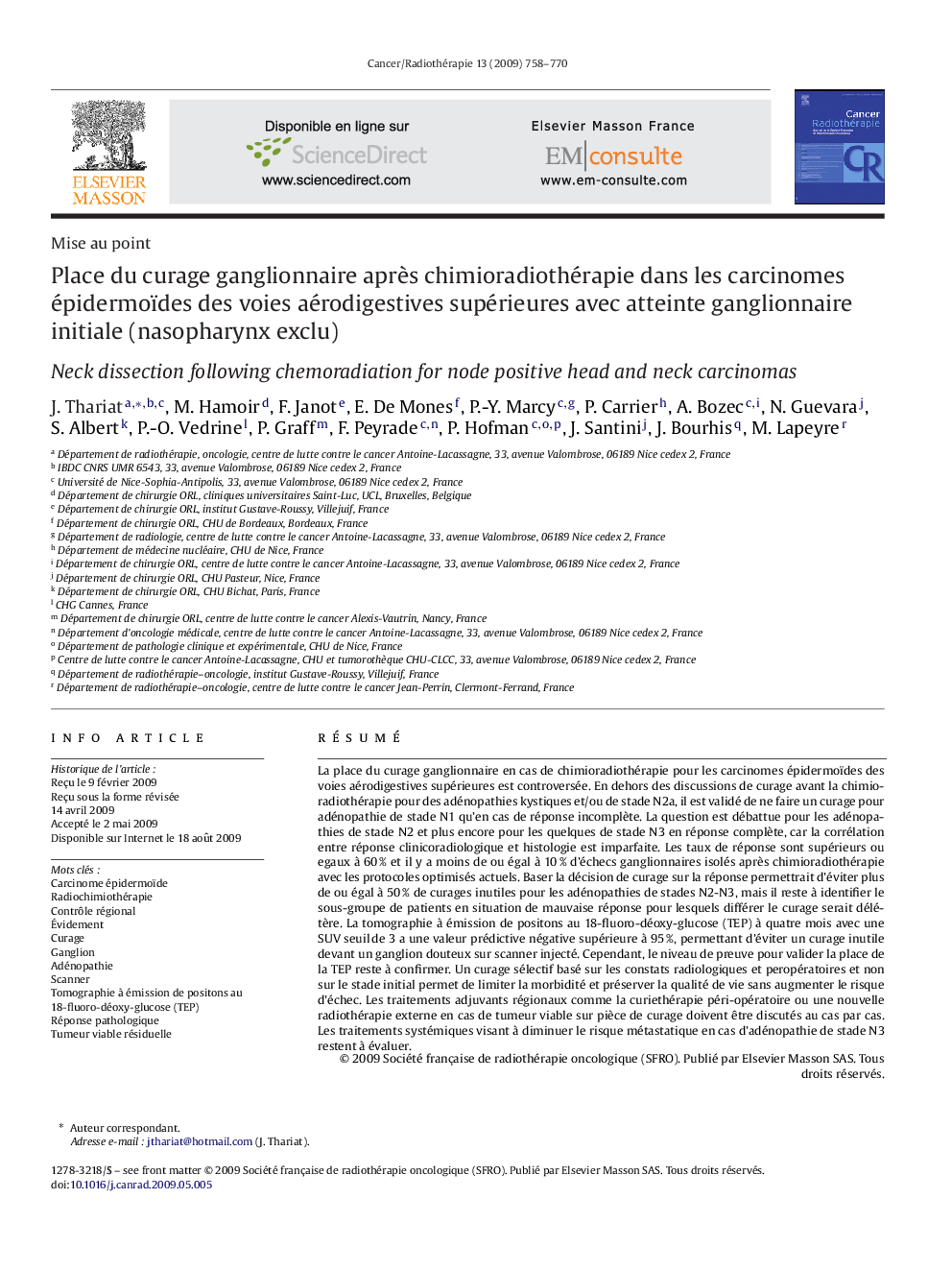| کد مقاله | کد نشریه | سال انتشار | مقاله انگلیسی | نسخه تمام متن |
|---|---|---|---|---|
| 2118726 | 1085246 | 2009 | 13 صفحه PDF | دانلود رایگان |
عنوان انگلیسی مقاله ISI
Place du curage ganglionnaire après chimioradiothérapie dans les carcinomes épidermoïdes des voies aérodigestives supérieures avec atteinte ganglionnaire initiale (nasopharynx exclu)
دانلود مقاله + سفارش ترجمه
دانلود مقاله ISI انگلیسی
رایگان برای ایرانیان
کلمات کلیدی
Positron-emission tomography (PET)Radiochimiothérapie - radiochemotherapyAdenopathy - آدنوپاتیScanner - اسکنرNeck dissection - تراکم گردنAdénopathie - لنفادنوپاتیPathologic response - پاسخ پاتولوژیکSquamous cell carcinoma - کارسینوم سلول سنگفرشیcarcinome épidermoïde - کارسینوم سلول سنگفرشیchemoradiation - کمورادیاسیونRegional control - کنترل منطقه ایGanglion - گانگلیونNode - گرهCurage - گرگرفتگی
موضوعات مرتبط
علوم زیستی و بیوفناوری
بیوشیمی، ژنتیک و زیست شناسی مولکولی
تحقیقات سرطان
پیش نمایش صفحه اول مقاله

چکیده انگلیسی
The optimal timing and extent of neck dissection in the context of chemoradiation for head and neck cancer remains controversial. For some institutions, it is uncertain whether neck dissection should still be performed upfront especially for cystic nodes. For others, neck dissection can be performed after chemoradiation and can be omitted for N1 disease as long as a complete response to chemoradiation is obtained. The question is debated for N2 and N3 disease even after a complete response as the correlation between radiological and clinical assessment and pathology may not be reliable. Response rates are greater than or equal to 60% and isolated neck failures are less than or equal to 10% with current chemoradiation protocols. Some therefore consider that systematic upfront or planned neck dissection would lead to greater than or equal to 50% unnecessary neck dissections for N2-N3 disease. Positron-emission tomography (PET) scanning to assess treatment response and have shown a very high negative predictive value of greater than or equal to 95% when using a standard uptake value of 3 for patients with a negative PET at four months after the completion of therapy. These data may support the practice of observing PET-negative necks. More evidence-based data are awaited to assess the need for neck dissection on PET. Selective neck dissection based on radiological assessment and peroperative findings and not exclusively on initial nodal stage may help to limit morbidity and to improve the quality of life without increasing the risk of neck failure. Adjuvant regional radiation boosts might be discussed on an individual basis for aggressive residual nodal disease with extracapsular spread and uncertain margins but evidence is missing. Medical treatments aiming at reducing the metastatic risk especially for N3 disease are to be evaluated.
ناشر
Database: Elsevier - ScienceDirect (ساینس دایرکت)
Journal: Cancer/Radiothérapie - Volume 13, Issue 8, December 2009, Pages 758-770
Journal: Cancer/Radiothérapie - Volume 13, Issue 8, December 2009, Pages 758-770
نویسندگان
J. Thariat, M. Hamoir, F. Janot, E. De Mones, P.-Y. Marcy, P. Carrier, A. Bozec, N. Guevara, S. Albert, P.-O. Vedrine, P. Graff, F. Peyrade, P. Hofman, J. Santini, J. Bourhis, M. Lapeyre,